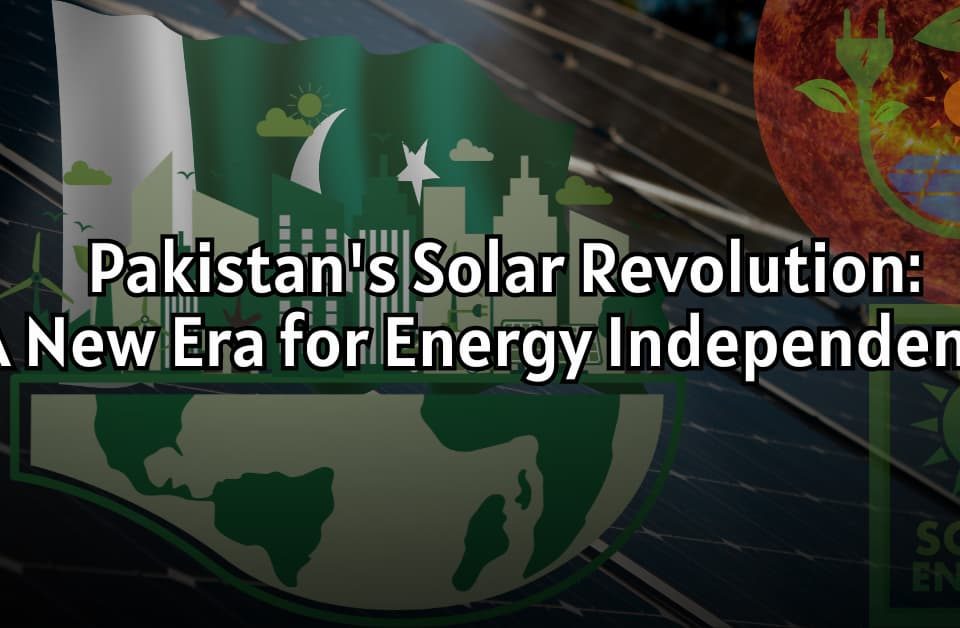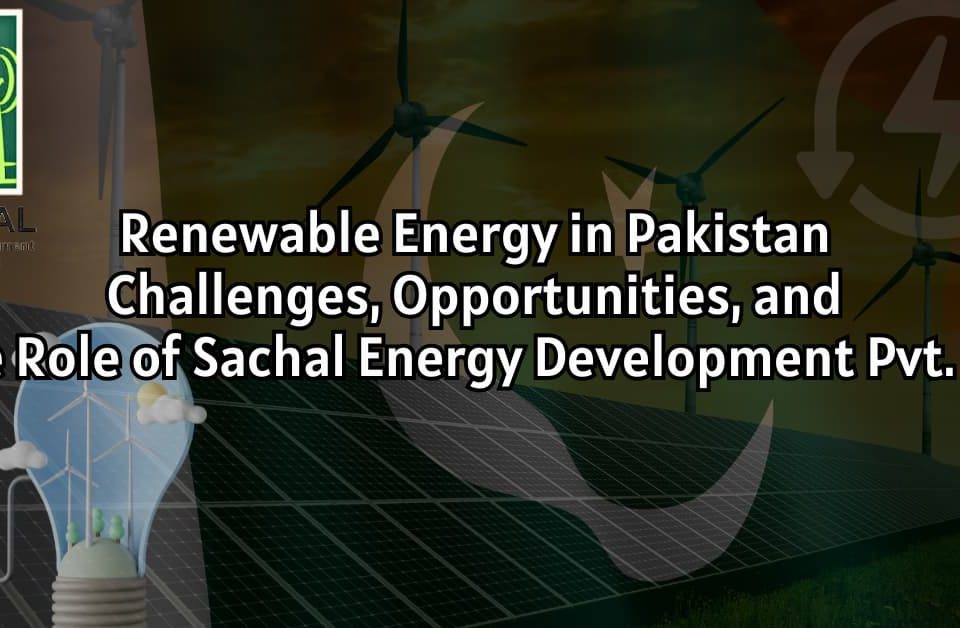Pakistan’s Renewable Energy: A Beacon for Sustainable Development, Role of CPEC, and Global Partnerships

Renewable Energy Trends, Analysis, and Way Forward
February 28, 2025
Pakistan’s Solar Revolution: A New Era for Energy Independence
March 18, 2025Introduction
As the best solution to Pakistan energy issue due to its potential in mitigating energy crisis and minimizing the attributed environmental impact, Wind and Solar energy are essential. As the global need for clean energy grows, Pakistan has colossal potential to tap into its plentiful renewable resources. With renewable energy sources, notably wind and solar energy, having the potential to completely transform its energy landscape, Pakistan, specifically the Gharo-Keti Bandar wind corridor in Sindh, is at the nexus of an energy revolution. In addition to this enormous potential, the World Bank has committed a game-changing $20 billion to support Pakistan’s renewable energy sector. This blog delves into how wind energy can propel Pakistan’s energy future, along with key initiatives like the China-Pakistan Economic Corridor (CPEC) and the role that global partnerships play in this renewable revolution, with Sachal Energy Development Pvt. Ltd. (SEDL) already at the forefront of this renewable revolution.
Wind Energy: A Beacon of Hope for Pakistan
One of the most promising sites for wind energy generation is the Gharo-Keti Bandar wind corridor in Sindh, Pakistan.
- Geographical Advantage: The wind corridor is a perfect location for wind farms because of its steady and strong winds. This corridor alone has the untapped capacity to generate up to 50,000 MW of electricity.
- Economic and Environmental Benefits: Pakistan may lessen its carbon footprint and dependency on foreign fuels by investing in wind and solar energy. To reduce emissions and fight climate change, wind farms such as the 49.5MW Sachal Wind Power Project in Jhampir Sindh, which has 33 WTGs installed, produce about 136.5 GWh of green energy yearly.
- Job Creation and Regional Development: Solar and wind energy offer substantial financial advantages. Developing wind farms in Sindh creates jobs and new skills development opportunities for local populations. The Sachal Project offers a sustainable future for these areas while acting as a regional economic growth stimulus.
CPEC and Renewable Energy: A Game-Changer for Pakistan
Pakistan’s energy system has changed because of the CPEC project. Through the facilitation of large-scale projects, the CPEC has brought various wind and solar energy projects to the province of Sindh, including in Bahawalpur, Punjab.
- Renewable Energy Integration: CPEC plays a key role in helping Pakistan meet its renewable energy goals by facilitating the integration of solar and wind energy into the country’s existing energy mix through targeted investments.
- Impact on Energy Efficiency: Upgrading Pakistan’s grid infrastructure could pave the way for better integration of renewable energy, significantly enhancing overall energy efficiency. A diversified energy mix would help minimize power losses during transmission and ensure a more balanced and effective distribution of electricity across the country.
The World Bank’s $20 Billion Investment: Fueling Pakistan’s Renewable Transformation
In January 2025, with a 10-year agreement with Pakistan, the World Bank recently committed to provide $20 billion to help Pakistan grow its renewable energy sector. In order to help the nation meet its energy and climate goals and pave the path for a more sustainable future, the investment intends to hasten the adoption of solar and wind power.
- Targeted Investments: The World Bank will invest mostly in wind and solar projects. This includes large facilities, and the infrastructure modifications needed to integrate renewable sources into the grid.
- Building Capacity: The World Bank offers technical and financial assistance to ensure that projects are carried out successfully. The collaboration aims to support the long-term success of these projects by equipping local communities with the skills needed for their management and operation.
- Advancing Technology: It focuses on incorporating advanced technologies that will enhance the efficiency and sustainability of renewable energy initiatives across Pakistan.
- Policy Collaboration: The World Bank and the Pakistani government are collaborating to develop a more favourable regulatory framework that will draw clean energy investment and guarantee project timely and successful implementation.
Pakistan’s Solar Surge: A Surprise for Experts and the Grid
Despite the great potential of wind energy, solar power has expanded dramatically in Pakistan. According to recent studies, the nation’s solar capacity has unexpectedly increased, putting great strain on the national grid. Pakistan became the third-largest importer of solar modules in 2024, bringing in 13GW from China, which accounts for almost 25% of the country’s 49GW total power capacity. In large cities like Karachi, Lahore, and Islamabad, rooftop solar panels are installed in around 30% of residences. This increase in solar adoption highlights the difficulty of overseeing a heterogeneous energy mix, but it also shows how important renewable energy is becoming to Pakistan’s future.
Challenges and Pathway: Driving Sustainable Growth Through Wind Energy
Pakistan’s wind energy potential is undeniable, but before it can reach its full potential, a number of barriers need to be addressed.
- Infrastructure/Grid Limitations: Initially, Pakistan’s electricity infrastructure was not intended to manage the variations in power produced by wind and solar. Energy distribution bottlenecks result from the grid infrastructure’s inability to integrate solar or wind energy. Wind power integration into the grid will be difficult if infrastructure is not modernized. Effectively balancing supply and demand will necessitate large investments in smart meters, energy storage technologies, and grid infrastructure.
- Policy and Market Adaptation: Because of an uneven regulatory framework, investments in the renewable sector have often been discouraged. Since the solar boom was unanticipated, policymakers are reassessing the renewable energy plan to ensure that the market can support solar and wind power without endangering grid stability. A solid and well-defined framework is essential to encourage national and foreign investment.
Conclusion
The Pakistan is fast moving toward renewable energy, with solar and wind power leading the way. The nation is working to increase energy efficiency and position itself as a pioneer in sustainable energy with the help of China-Pakistan Economic Corridor (CPEC) and a funds like $20 billion World Bank commitment. Pakistan can move toward a sustainable and energy-secure future with the help of international cooperation, effective policy changes, and strategic investments. Projects like the Sachal Wind Power Plant are helping to create more sustainable energy landscape advantageous to the environment and the economy as the wind energy industry grows.




